Of all the smartwatches we've tested—for both iPhone and Android—the Apple Watch Series 7 represents the best overall package. It does all the Apple Watch-y things most people probably want just as well as, or better than, any other Apple Watch, including fitness tracking, messaging, and apps. The Series 7's screens offer much more viewable area thanks to slightly larger casings and narrower borders, and the always-on screen means you don't have to lift your arm to check the time or status of your apps.
It also has the most complete suite of health tracking tools, including blood oxygen monitoring and ECG, as well as faster charging and more crack-resistant glass. The Apple Watch Series 7 is a great first smartwatch, and it's a solid upgrade if you have an Apple Watch Series 3 or older. If you own a Series 4, 5, or 6 that's still working well though, the Series 7 features won't feel like much of an upgrade.
The Apple Watch Series 7 offers the best combination of style, message handling, activity tracking, app selection, and battery life of any smartwatch for any platform. It comes in two body sizes—41 mm and 45 mm—that offer more active screen area than on previous Apple Watches in similarly sized bodies. It's a little faster at running apps than the Apple Watch SE, and noticeably faster than the still-available Apple Watch Series 3. And it includes more premium features than previous models, such as an always-on display, blood oxygen measurement, ECG, more crack-resistant glass, and faster charging. It's also available in more expensive steel and titanium casings. The Apple Watch Series 7 offers the same suite of sensors as the Series 6.
These include an accelerometer, a gyroscope, a heart rate sensor, a barometer, an always-on altimeter, a compass, an SpO2 sensor, and a VO2 max sensor. These sensors have a host of health and fitness tracking features, including blood oxygen monitoring, heart rate monitoring, sleep tracking, fall detection, workout tracking, and more. The ECG system has received clearance from the United States Food and Drug Administration, a first ever for a consumer device, and is supported by the American Heart Association.
This device can also detect falls and will automatically contact emergency services unless the user cancels the outgoing call. The microphone was moved to the opposite side between the side button and the digital crown to improve call quality. Other changes include the digital crown incorporating haptic feedback with the Apple Haptic Engine and includes the new Apple-designed W3 wireless chip. The Apple Watch Series 7 offers all-day battery life and faster charging than previous models. Apple promises up to 18 hours of use on a charge—enough for the Watch to get through each day when you charge it each night, or for it to track your sleep if you're willing to charge it for a bit during the day. We've found that we can use the Apple Watch Series 7 just as we have previous generations, with plenty of power remaining at the end of the day.
In one test, the battery was at 30% after about 13 hours of wear, including an hour of activity tracking and audio streaming over LTE. Additional features include a new S6 processor that is up to 20% faster than the S4 and S5, a 2.5× brighter always-on display, and an always-on altimeter. The S6 incorporates an updated, third generation optical heart rate sensor and also enhanced telecommunication technology, including support for ultra-wideband via Apple's U1 chip, and the ability to connect to 5 GHz Wi-Fi networks. The Series 6 watch was updated with faster charging hardware such that it completes charging in ~1.5 hours. Force Touch hardware was removed, consistent with the removal of all Force Touch functionality from watchOS 7.
You get the new Apple S7 SiP powering the Apple Watch Series 7, but there is no performance improvement here. Apple says this new processor is on par with the previous-gen S6 SiP in the Series 6. The Series 7 supports dual-band Wi-Fi, Apple's U1 chip, and ultra wideband antennas. It has health sensors for blood oxygen and heart rate tracking as well as the hardware to record an ECG.
Just like the Series 6, the new Series 7 also has an always-on altimeter that can track elevation changes constantly. The fall detection feature now also works while tracking workouts. The Series 7 is also equipped with new hardware that enables ultra-rapid, short-range wireless data transfer at 60.5 GHz, though Apple has not fully explained this new functionality. TechRadar gave it a score of 4.5/5, calling it one of the top smartwatches, while criticizing the short battery life. Digital Trends gave it a score of 5/5, calling it Apple's best product and praising the design, build quality, and software, among others, while criticizing the battery life. CNET gave it a score of 8.2/10, calling it the "best overall smartwatch around", while criticizing the battery life and lack of watch face options.
T3 gave it a score of 5/5, calling it a "truly next-gen smartwatch" due to its thinner body and bigger screen compared to the Series 3, and health features. The Apple Watch Series 7 is powered by an S7 SiP , which is a rebranded S6 SiP from Series 6; watchOS 8 performance is identical on Series 6 and 7. Force touch technology has been removed in Watch Series 6 and Watch SE. The watch also has a side button which can be used to display recently used apps and access Apple Pay, which is used for contactless payment. Apple rates the device's battery for 18 hours of mixed usage.
The watch then reverts to its original mode when recharged or after holding down the side button. The Apple Watch Series 7 is the first model to come in 41 mm and 45 mm sizes, a 1 mm height increase, respectively, over the small and large versions of the previous few generations. Combined, these elements make for a larger screen that offers an appreciable difference. We especially like that the bigger on-screen buttons are easier to tap. The display also follows the glass's curved edges, but this is mainly noticeable on certain watch faces.
Other differences come down to style and color options — the SE is available in two sizes, three different colors , and with or without cellular connectivity. It isn't available in the higher-end stainless steel or titanium finishes, and you can't get the new blue or red color options available for the Series 6. Like other aluminum Apple Watch models, the SE has Apple's Ion-X glass instead of the sapphire used on the stainless and titanium watches. Ion-X glass is tough, but it's definitely more prone to scratches and breaking — in fact, I dropped the SE about four feet onto a tile floor during my review period and shattered the top left corner of the screen.
The S7 SiP with 64-bit dual-core processor is up to 20% faster than the S5 in Apple Watch SE.11 The always-on altimeter detects your elevation in real time. So, the difference between the two generations of Apple's smartwatches boils down to the importance placed on the larger display, the reduced charging time, water-and-dust resistance, and color options. If one has already made up one's mind, there is no persuading otherwise.
The S7 SiP with 64-bit dual-core processor is up to 20% faster than the S5 in Apple Watch SE.12 The always-on altimeter detects your elevation in real time. With that being said, Apple's watchOS software may offer more fluid animations and better touchscreen support, but that comes at a cost. Most Apple Watches can only last a day or two on a single charge. You might find yourself having to conserve battery power if you want to do power-intensive things like go for a run with GPS or track your sleep. Garmin watches benefit from the battery-saving properties of RTOS.
Most Garmin devices, depending on their display type and size, can last anywhere from four days to two weeks on a charge. Initial reviews for the device have been generally positive with some caveats. Reviewers praised the watch's potential ability to integrate into everyday life and the overall design of the product, but noted issues of speed and price. Many reviewers described the watch as functional and convenient, while also noting failure to offer as much potential functionality as preceding smartphones. Farhad Manjoo of The New York Times mentioned the device's steep learning curve, stating it took him "three long, often confusing and frustrating days" to become accustomed to watchOS 1, but loved it thereafter.
Some reviewers also compared it to competing products, such as Android Wear devices, and claimed "The Smartwatch Finally Makes Sense". He concluded that there is no "killer application" so far besides telling the time, which is the basic function of a wristwatch anyhow. Charging a watch every night isn't much of a hassle at home, where you're likely charging your phone, too. We have some recommendations for great charging accessories, including three-in-one wireless charging stations for your Apple Watch, iPhone, and AirPods.
While you shouldn't expect a bump in battery life for the Series 7, it does juice up faster than earlier models thanks to a new charging architecture and a Magnetic Fast Charger USB-C Cable. Apple says it charges 33% faster than the Series 6—just 45 minutes of charging will take the watch from dead to 80% battery life. And eight minutes on the charger offers eight hours of juice for overnight sleep tracking. It's worth noting that all of these features - except the always-on altimeter - can be found on the Series 4 and 5 too. Now, although Apple will not officially sell the Apple Watch 6, users can still buy the previous-gen Apple Watch from third-party resellers until stocks last. So, which one should you get if you are in the market for an Apple Watch?
Well, if you want the latest and greatest from Apple, we recommend you go for the latest Apple Watch 7. The larger display, dust resistance, and faster charging are reasons enough to convince prospective buyers. Otherwise, if you don't care much about these minor upgrades and just want the Apple Watch experience, go with Apple Watch 6, which will now sell at reduced prices. On average I found you sacrifice about half a day in battery power when using the always-on display, and that's if you use sleep tracking overnight. I'm happy with that exchange, mostly because the new sleep tracking feature is so basic I don't think it's worth using. This means you turn the watch off overnight to get two full days, or charge the watch overnight anyway.
Looked at like this, there's no downside to the always-on screen, and I'd pay the extra to get it, even if it's not essential. Apple has also made some significant improvements to battery life and charging on the Apple Watch Series 7. The company claims that the new smartwatches offer 18-hour all-day battery life, along with 33% faster charging than the previous model. Apple claims 18 hours of battery life on the Apple Watch Series 7, and I was able to get about a day and a half worth of use on a single charge. It was set to monitor my heart rate throughout the day, with the always-on display mode enabled, and SpO2 tracking on by default. During this time, the watch was connected to my iPhone at all times.
I did also manage to get just about two days' worth of battery life with the always-on display switched off. Using the Series 7's cellular capability resulted in a drop in battery life as I expected. The Apple Watch has been one of the best smartwatches in the industry, and each new generation becomes the wearable of choice for those using an iPhone. Apple Watch has been improved over the years, with multiple generations each bringing in new features and capabilities. So is the Apple Watch Series 7 a big leap over the Series 6, or just a small iterative step? Battery life on both is a full day's usage, so overnight charges are required, but you won't be buying the series 6 for extra battery life.
Although the SE doesn't have ECG or blood oxygen monitoring, it has the same heart rate capabilities and neat features like Breathe, a one-minute mindfulness app, as the series 6. Noise monitoring is a feature that sends you alerts when the racket around you is loud enough to potentially damage your hearing. The latest processor is only found in series 6 (Apple watch SE uses last year's chip, which is still pretty nippy). And if you are tracking your sleep, then you'll need to wear the watch at night and recharge it in the morning. Though both SE and series 6 can do this, the battery on the series 6 recharges more quickly. In terms of choice of design, health features and sheer power, Apple watch series 6 is head and shoulders above the SE – and every other smartwatch available.
In comparison to other Apple products and competing smartwatches, marketing of the Apple Watch promoted the device as a fashion accessory. Apple later focused on its health and fitness-oriented features, in an effort to compete with dedicated activity trackers. The watchOS 3 added fitness tracking for wheelchair users, social sharing in the Activity app, and a Breathe app to facilitate mindfulness.
This is Apple's most powerful smartwatch yet and it features upgrades like a bigger screen, dust resistance, faster charging and more. But taking a deeper look at the differences between the Watch Series 7 andSeries 6, it doesn't seem like a major upgrade. We tell you what has changed and what remains the same in this detailed comparison.
All the Watch models being compared here have built-in GPS, optical heart rate sensor, speaker, microphone, water resistance up to 50 metres, emergency SOS, gyroscope and an ambient light sensor. The Apple Watch Series 7 can only be paired with an iPhone, but the process is seamless. The watch installs compatible apps that are already on your phone so you can access them on your wrist directly. For cellular models, the process of setting up LTE is simple and quick.
Once done, you can stay connected using just LTE and leave your iPhone out of reach, for example while working out. Apple had also advertised faster charging speeds on the Series 7 at the time of its unveiling, but this feature is currently not available in India. The Apple Watch Series 7 has a 1.9-inch LTPO OLED display with a resolution of 396x484 pixels for the 45mm model. It has a peak brightness of 1000 nits when it's active and upto 500 nits when it's in the always-on state. Apple has also shrunk the bezels on the Series 7 and claims that the front crystal is its most crack-resistant material yet (aluminium models have Ion-X front glass while stainless steel and titanium ones have sapphire crystal). This watch has an IP6X rating for dust resistance and is also water resistant upto 50m.
If you are planning to go for a short swim, you can take this new Series 7 along to track it as well. Series 2 introduces water resistance at a rating of 50 meters. It can keep track of the number of laps and distance during Swimming workouts.
During swimming, the touch function can be manually disabled with 'Underwater mode'. Once this is turned off, by rotating the Digital Crown continuously, it uses the speaker to expel residual water through a series of 10 vibrations. Most recently used apps now are saved in the background, so apps and information load faster. The Series 2 was sold in casings of anodized Aluminium, Stainless Steel and Ceramic. Whereas the Apple Watch SE is available only in an aluminum body with three colors, the Series 7 offers many more—and more expensive—options.
The aluminum Series 7 is available in blue, midnight , starlight (a bronzy-silver), and green, and Product Red version. Notably absent is a plain silver, something that's been present in the lineup since the Watch was first introduced. For a $300 premium, you can choose a stainless steel case in graphite, silver, or gold. And for another $100 more than that, you can have titanium or black titanium.
Apple Watch Series 6 Vs 7 Vs Se All of the more premium models have sapphire screens, rather than glass, which should be more scratch resistant; across all models, the crystal is more crack resistant than on previous generations thanks to its shape and thickness. None of these variations function any differently; it's just aesthetics and screen material . Battery life is also reliable if not spectacular — I'm able to go about a day-and-a-half between charges with the brightness set at medium. WatchOS 7's sleep tracking does make managing the battery more annoying, however, and the SE doesn't have the Series 6's slightly faster charging capability. It takes a solid two-plus hours to fully charge, and if I'm wearing it while I sleep, that means I have to find time during the day to charge it up. As a result, I end up taking it off and dropping it on the charger multiple times a day — when I'm in the shower, before I go to bed, etc. — to give it micro boosts, which is way more annoying than just charging overnight.
Of course, you can just charge it overnight if you don't care about the sleep tracking features, which are admittedly of limited utility anyways. The Apple Watch 7 is basically the Watch 6 with a slightly larger screen and the ability to charge faster – most people will likely choose the Watch 7 because of the new attractive colors it comes in, rather than any new features. While it still packs a wide variety of impressive features, and is a superb second screen for an iPhone user the Watch 7 doesn't offer the battery life, fitness or design overhaul that it needs to inspire an upgrade.
The Series 7 features several advanced health-tracking features Apple introduced on the Series 6 that you don't get on the SE, including sensors for blood oxygen saturation and electrocardiogram readings. The SpO2 sensor is incredibly useful in light of COVID-19, as it indicates how well your circulatory and respiratory systems are delivering oxygenated blood to your body, and can help you gauge whether a hospital visit is necessary. The ECG function checks for signs of atrial fibrillation , an irregular heart rhythm that can lead to blood clots, stroke, heart failure, and other serious complications.
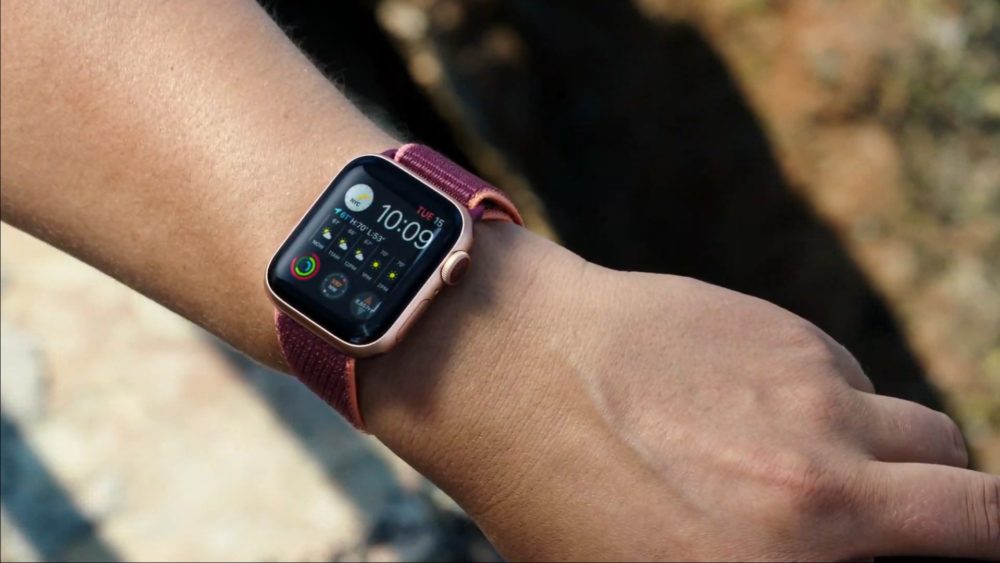
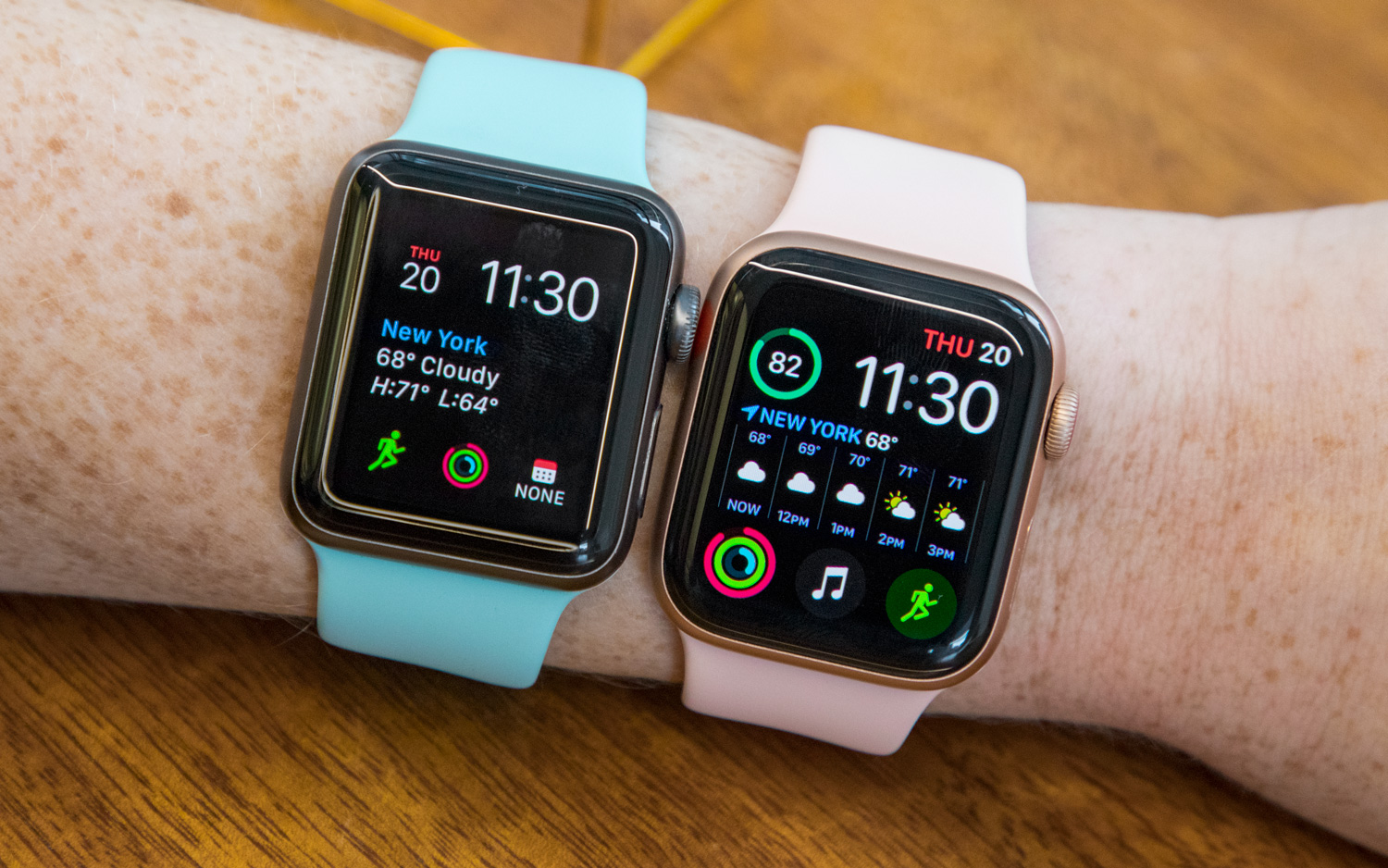






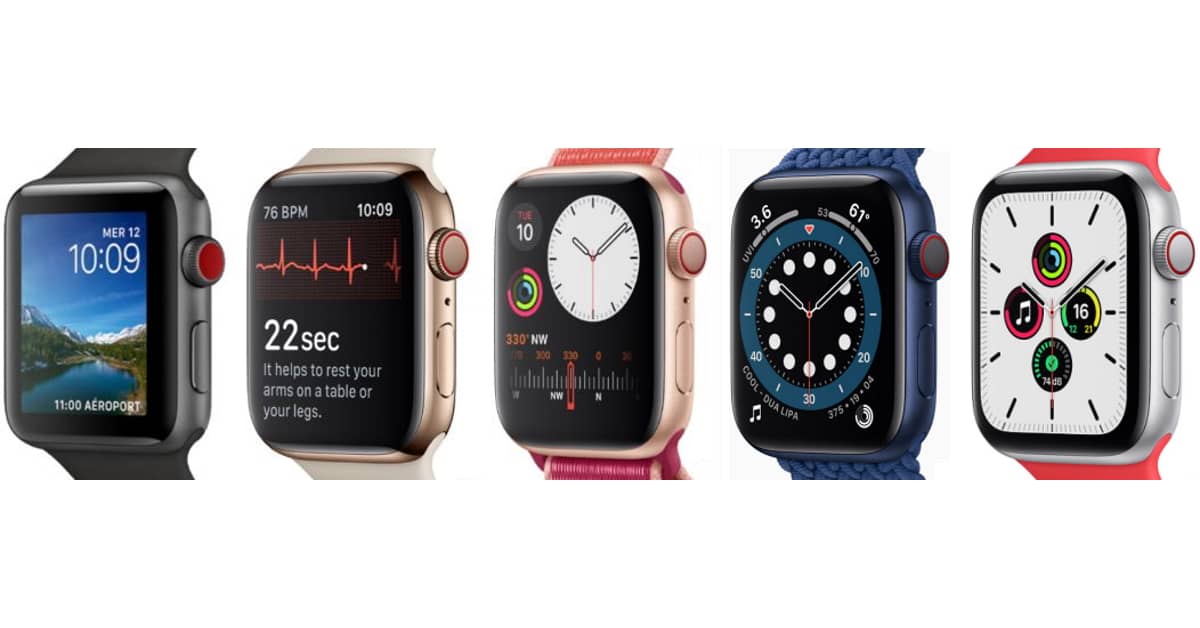




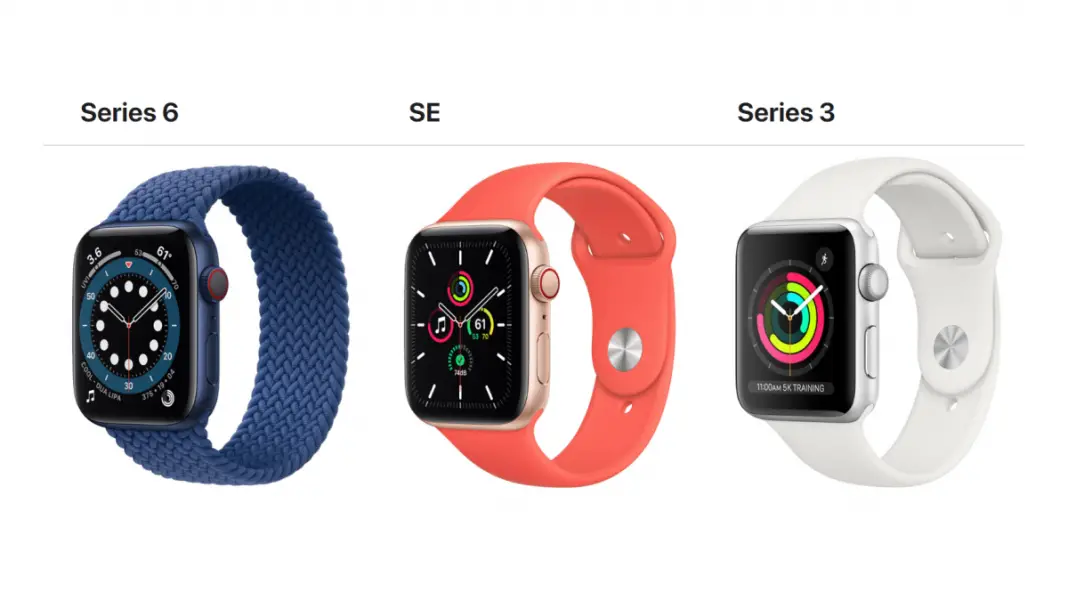
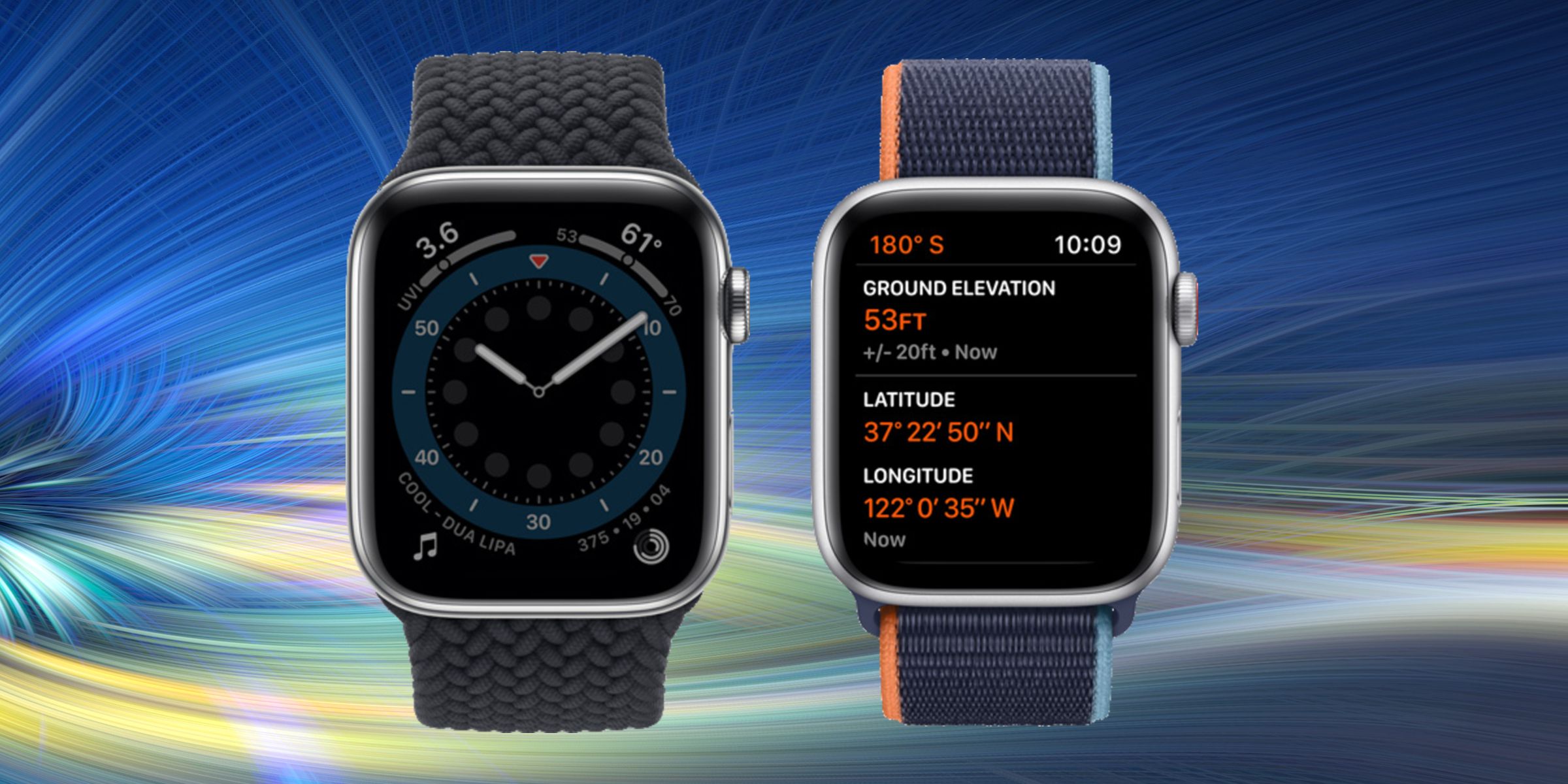
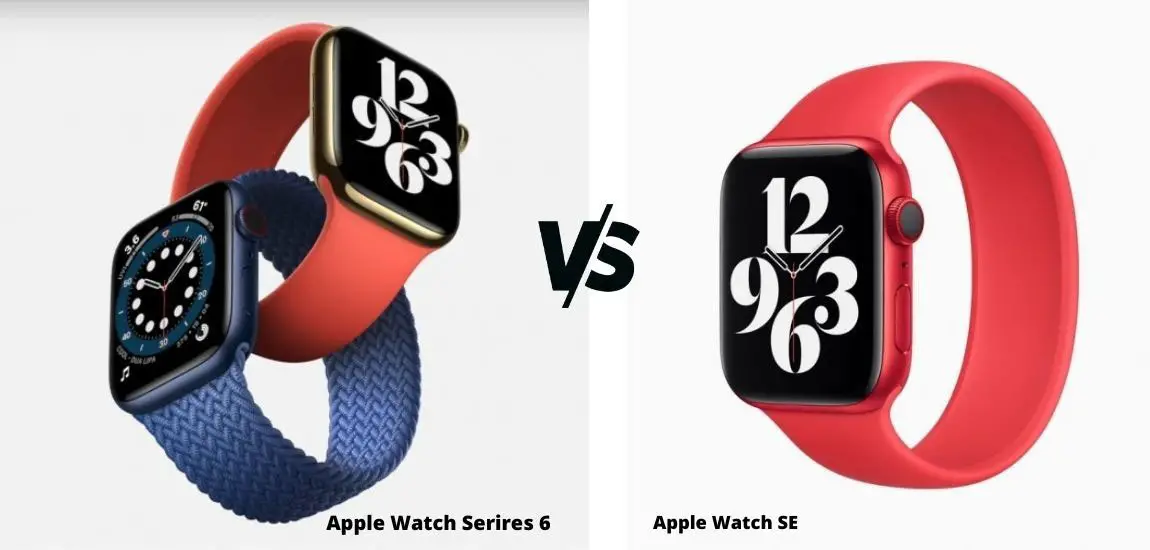




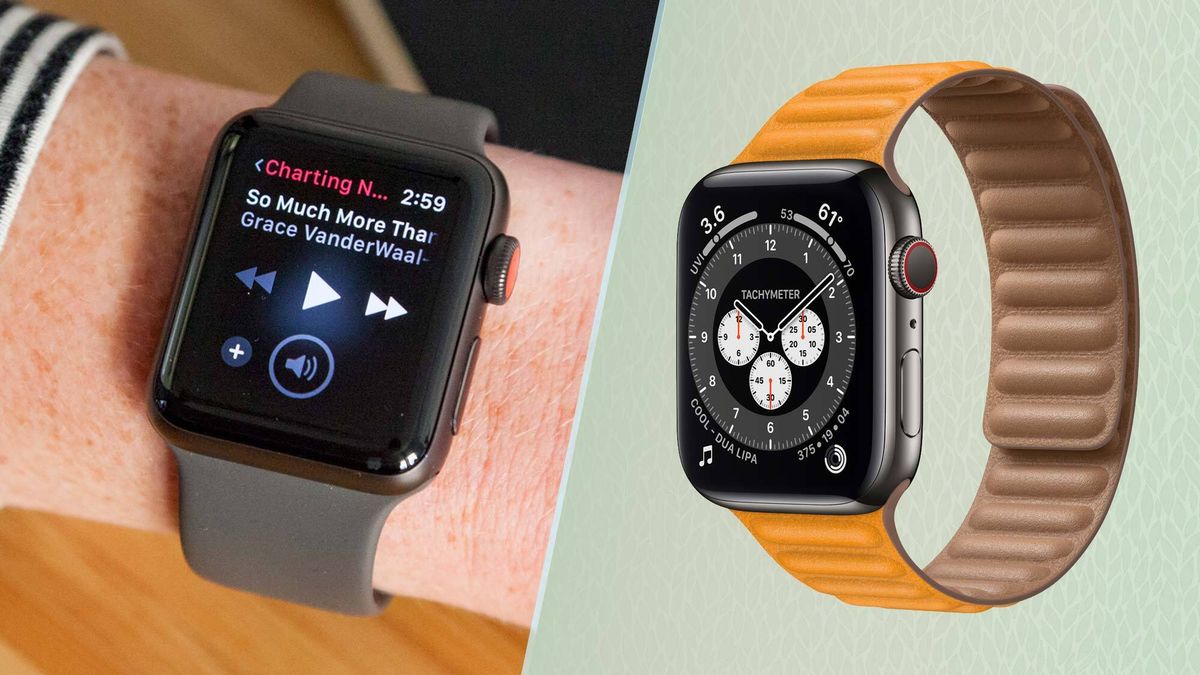



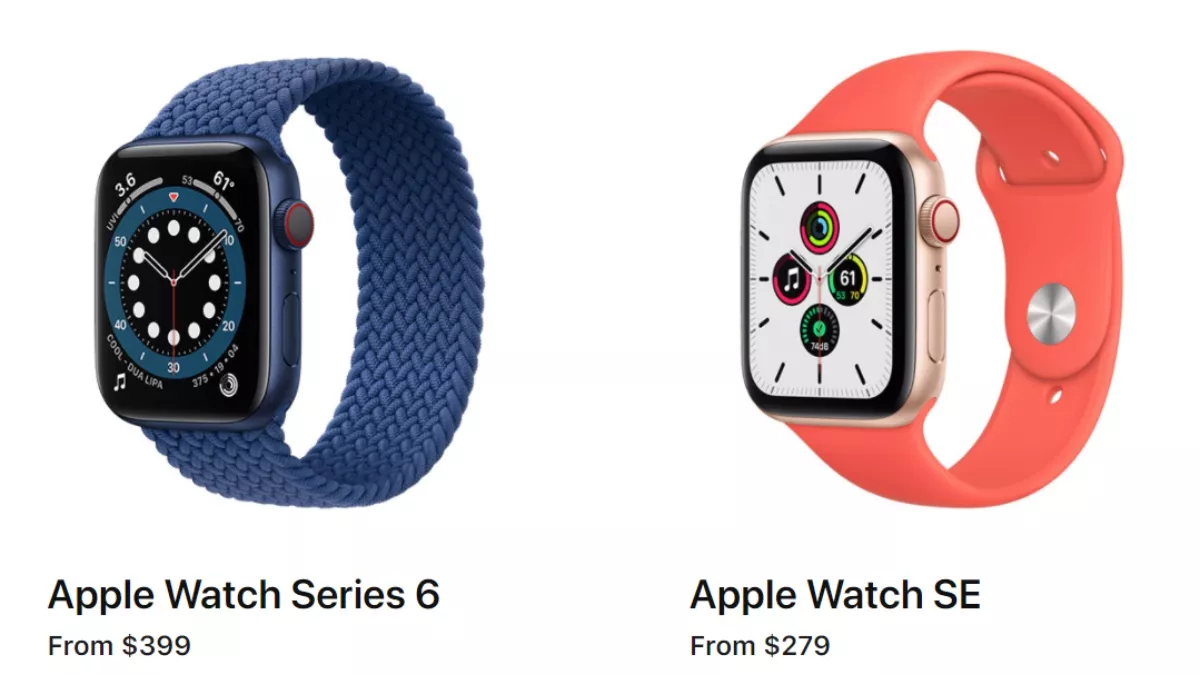


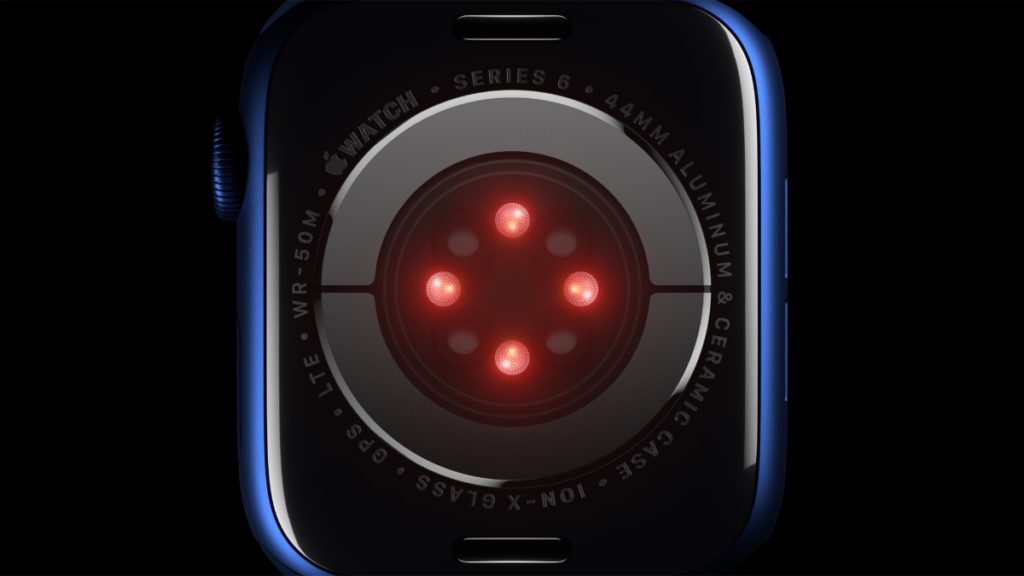
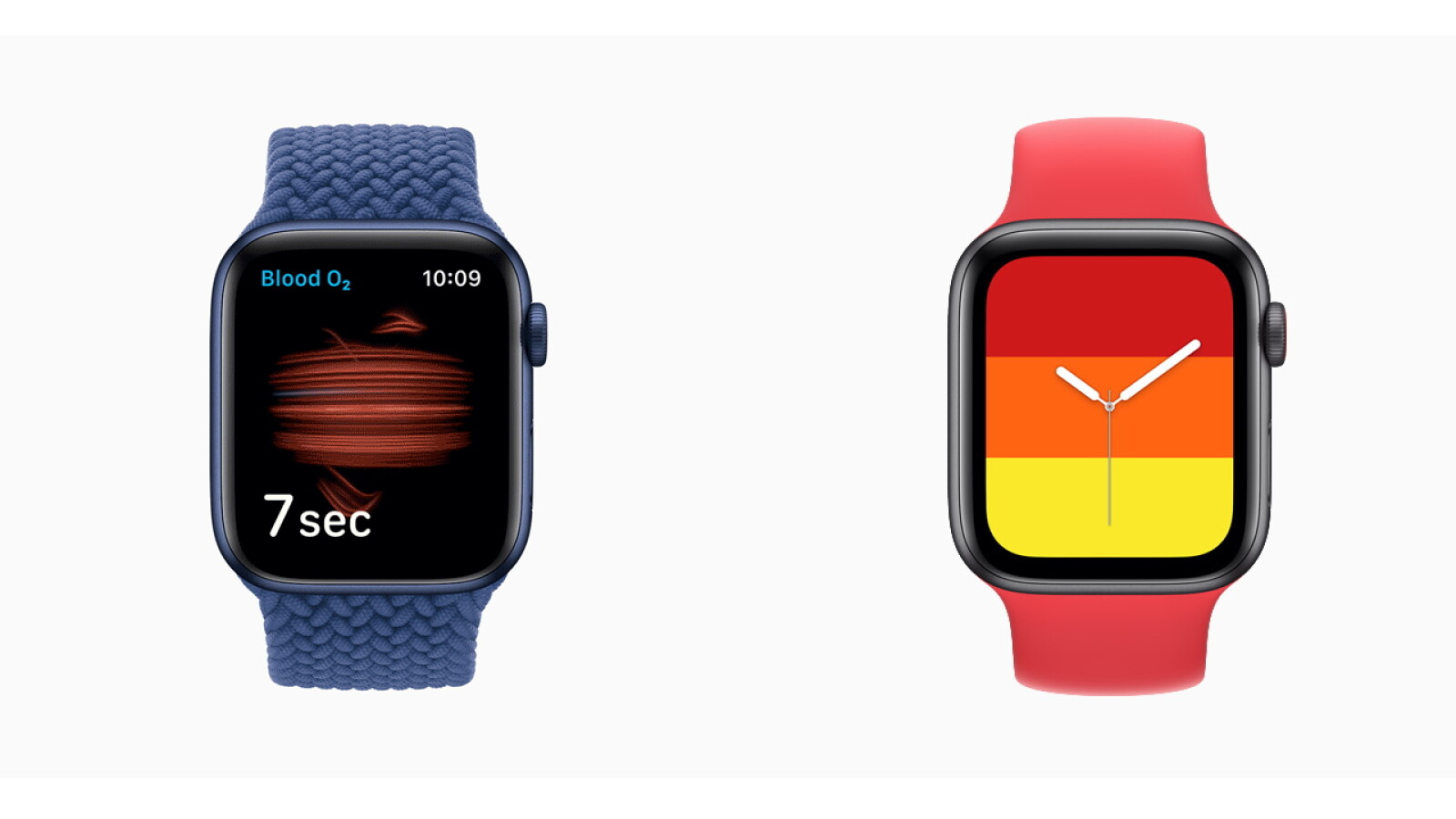


No comments:
Post a Comment
Note: Only a member of this blog may post a comment.